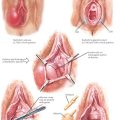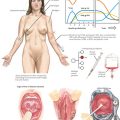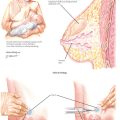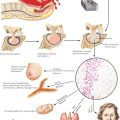Chapter 252 Urodynamic Testing: Complex
REQUIRED EQUIPMENT
Wall LL, Hewitt JK, Helms MJ. Are vaginal and rectal pressures equivalent approximations of one another for the purpose of performing subtracted cystometry? Obstet Gynecol. 1995;85:488.
Abrams P, Blaivas JG, Stanton SL, Andersen JT. The standardization of terminology of lower urinary tract function produced by the International Continence Society Committee on Standardization of Terminology. Scand J Urol Nephrol. 1988;114:5.
American College of Obstetricians and Gynecologists. Urinary incontinence in women. Obstet Gynecol. 2005;105:1533.
American College of Obstetricians and Gynecologists. Antibiotic prophylaxis for gynecologic procedures. ACOG Practice Bulletin 74. Obstet Gynecol. 2006;108:225-234.
American College of Obstetricians and Gynecologists. The role of cystourethroscopy in the generalist obstetrician–gynecologist practice. ACOG Committee Opinion 372. Obstet Gynecol. 2007;110:221.
Consensus Conference. Urinary incontinence in adults. JAMA. 1989;261:2685.
Decter RM, Harpster L. Pitfalls in determination of leak point pressure. J Urol. 1992;148:588.
Gilmour RF, Churchill BM, Steckler RE, et al. A new technique for dynamic analysis of bladder compliance. J Urol. 1993;150:1200.
Lentz GM. Urogynecology. In: Katz VL, Lentz GM, Lobo RA, Gershenson DM, editors. Comprehensive Gynecology. 5th ed. Philadelphia: Mosby/Elsevier; 2007:545.
Massey A, Abrams P. Urodynamic of the female lower urinary tract. Urol Clin North Am. 1985;12:231.
Song JT, Rozanski TA, Belville WD. Stress leak point pressure: a simple and reproducible method utilizing a fiberoptic microtransducer. Urology. 1995;46:81.








